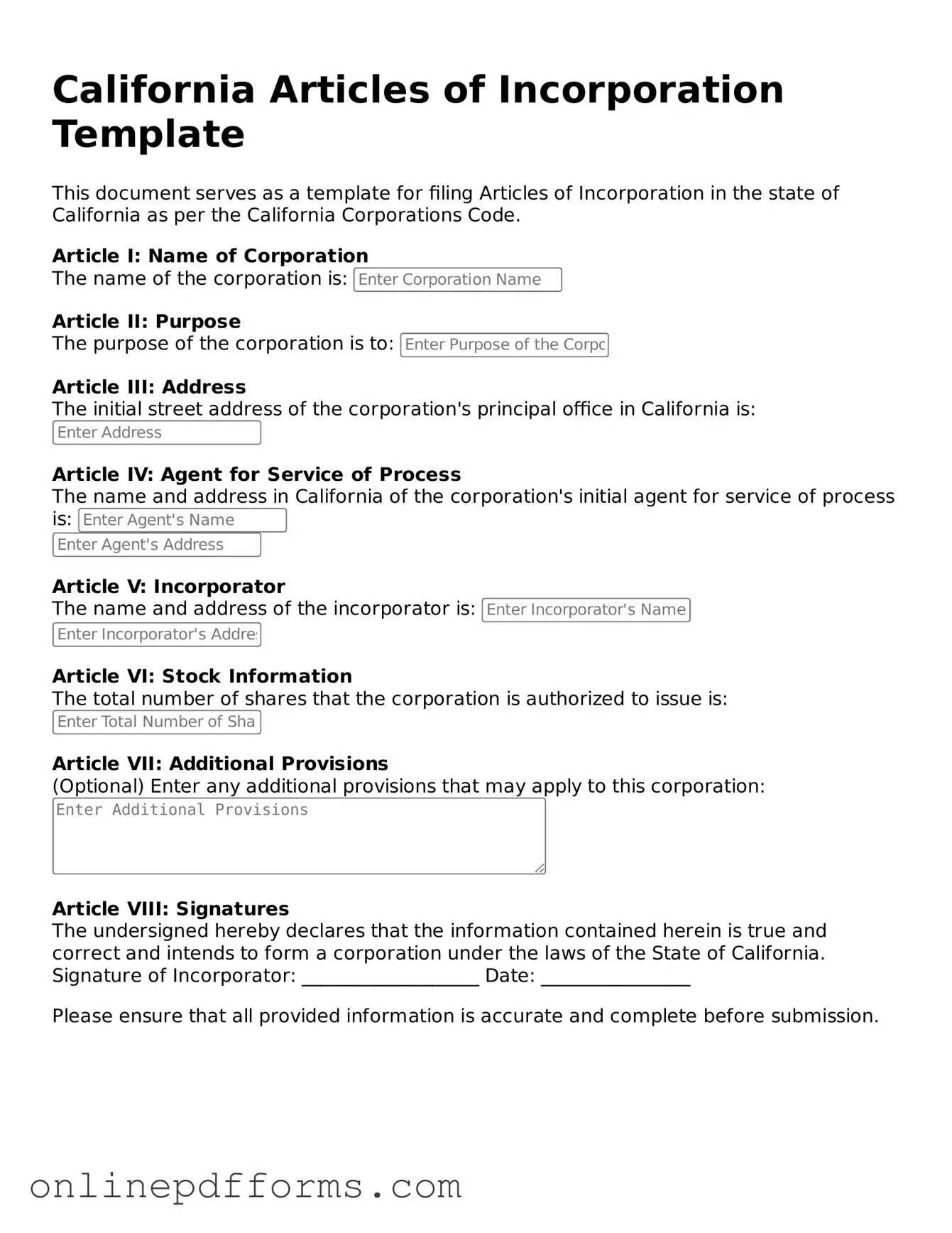The Articles of Incorporation in California is similar to the Certificate of Incorporation used in many other states. Both documents serve as the foundational legal paperwork needed to establish a corporation. They outline essential details such as the corporation's name, its purpose, and the registered agent's information. While the terminology may vary slightly from state to state, the core function remains the same: to officially create a corporation under state law.
Another document that resembles the Articles of Incorporation is the Bylaws. While the Articles of Incorporation are filed with the state, Bylaws are internal documents that govern how the corporation will operate. They detail the management structure, the responsibilities of officers and directors, and procedures for meetings. Both documents are crucial for establishing the legal framework of a corporation but serve different purposes in its operation.
The Certificate of Formation is a similar document used in some states, particularly for Limited Liability Companies (LLCs). Like the Articles of Incorporation, it is filed with the state to officially create the business entity. This document includes information about the LLC's name, address, and registered agent. Though the focus is on LLCs rather than corporations, the process of filing is comparable.
The Statement of Information is another document that shares similarities with the Articles of Incorporation. In California, this document must be filed shortly after the Articles to provide updated information about the corporation's officers, directors, and business address. Both documents are necessary for maintaining compliance with state requirements, ensuring that the corporation remains in good standing.
The Partnership Agreement is akin to the Articles of Incorporation in that it outlines the structure and rules governing a partnership. While it is specific to partnerships, it serves a similar purpose by establishing the legal framework for the business. Both documents are essential for defining the roles of the individuals involved and ensuring smooth operation.
The Operating Agreement is comparable to the Articles of Incorporation for LLCs. This document outlines the management structure, member responsibilities, and operational guidelines for the LLC. While the Articles create the entity, the Operating Agreement provides the rules for how it will function, much like Bylaws do for corporations.
The Certificate of Good Standing is another related document. It confirms that a corporation has complied with state regulations and is authorized to conduct business. While it does not create the corporation, it serves as proof that the corporation is active and in compliance, similar to how the Articles of Incorporation initiate the corporation's existence.
The Annual Report is similar in that it requires corporations to provide updated information to the state. This document typically includes financial statements, changes in management, and other important details. While the Articles of Incorporation are filed at the start, the Annual Report is an ongoing requirement that helps keep the state informed about the corporation's status.
Lastly, the Business License is somewhat similar, as it is often required to legally operate a business. While it does not establish the corporation, it ensures compliance with local regulations. Both documents are necessary for the legal operation of a business, but they serve different roles in the overall process of starting and maintaining a corporation.
